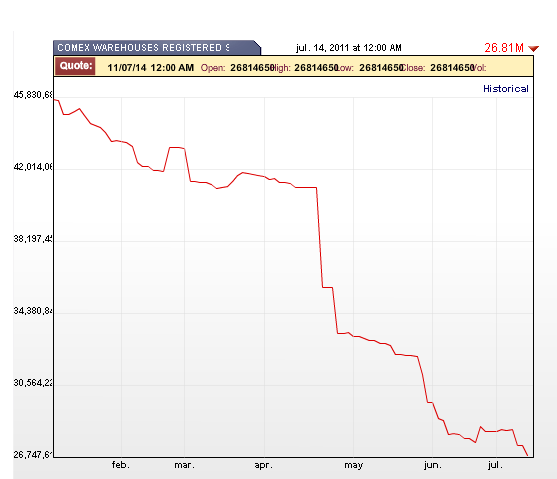Ten Things You Need to Know About Gold ETFs News Doors
Post on: 18 Июль, 2015 No Comment

Ten Things You Need to Know About Gold ETFs
Gold prices have fallen below $1,700 an ounce but ETFs tracking the precious metal are on track for another year of gains in 2012.
There are many reasons why gold ETFs could do well in 2013, assuming the world doesnt come to an end Friday when the Mayan calendar terminates. Central banks are continuing their monetary easing programs, Europes debt crisis isnt going away and the U.S. could face fallout over the fiscal cliff.
SPDR Gold Shares (NYSEArca: GLD). the largest gold ETF, has gained 6.6% year-to-date. Gold futures were trading around $1,667 per ounce Wednesday.
Your more paranoid (or bearish) friends might tell you that these gains signal a gold market flush with investors seeking to shore up against some kind of apocalyptic [U.S. dollar] disaster, Nicholas Colas, Chief Market Strategist for ConvergEx Group, wrote in a recent note.
As the fiscal cliff looms, its easy to get sucked into that idea: consumers see an impending threat to their hard-earned money and buy gold to hedge against a myriad of potential policy mistakes. But dont be so quick to jump on the bandwagon. There are quite a few things about gold that not many of us know particularly those doomsday preppers. [Fiscal Cliff Talks Dominate Gold ETFs ]

Colas points out 10 other factors that have helped support gold prices:
- Emerging market demand. In the third quarter, Indias consumer demand was 223.1 tons and Greater China, including China, Hong Kong and Taiwan, hit 185.1 tons. The current 38 ton gap has narrowed 71% since the third quarter of 1997. Gold is, at least partially, an emerging market play, Colas said.
- China. Gold is one of those rare products that China actually imports, Colas added.
- Central banks. The U.S. sits on 8,333 tons of gold, India 557.7 tons, Netherlands 612.5 tons, Japan 765.2 tons, China 1,054.1 tons and France 2,435.4 tons, to name a few.
- Investment demand. Jewelry made up 78.5% of total demand in 2002. In the third quarter of 2012, jewelry demand was 59.9% while investments accounted for the other 40.1%. According to the World Gold Council, 91% of European gold demand was in physical investment vehicles over the third quarter as a safe hedge against the euro currency.
- Exchange traded funds. ETFs are the fastest growing market for gold demand, increasing 58% over the year ended in the third quarter 2012. [Why Gold ETF Holdings are a Leading Indicator ]
- Supply. While 171,300 tons of gold has been extracted since mining began, the U.S. geological society estimates that about 51,000 tons still sit underground and the World Gold Council expects about 730 tons mined each year.
- Inflation. Gold has appreciated from $18.92 in 1911 to over $1,700 in 2012. With that kind of track record, gold remains a valuable hedge against government-sponsored inflation, Colas said.
- Diversification. Gold is that rare investment product which is historically uncorrelated to financial assets.
- Recyclable. Around 40% of total supply is recycled gold in 2012. Every piece of gold jewelry, every coi, every ingot ever produced still has value, Colas added.
- Gold standard? Any chatter about a new Gold standard is likely premature, Colas said. Total global gold at todays price is valued at around $10 trillion, whereas the U.S. government is sitting on $16.5 trillion in debt.
All in all the case for gold in 2013 looks pretty bullish, whether youre buying for high returns or in preparation for Armageddon. A historical upward trend and increasing demand for the precious metal makes a good case for buying, though I wouldnt be worried about resource scarcity and the replacement of national currency just yet, the strategist concluded.














